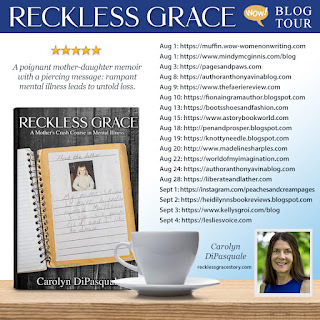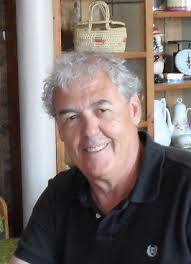Fiona Ingram's Blog, page 17
September 12, 2022
Lack of Moral Fibre by author Helen P. Schrader

Flying Officer Kit Moran has earned his pilot’s wings, but the greatest challenges still lie ahead: crewing up and returning to operations. Things aren’t made easier by the fact that while still a flight engineer, he was posted LMF (Lacking in Moral Fibre) for refusing to fly after a raid on Berlin that killed his best friend and skipper. Nor does it help that he is in love with his dead friend’s fiancée, but she is not yet ready to become romantically involved again. What is Lack of Moral Fibre? Established aviation author and expert on the Second World Warauthor Helen P. Schrader explains.
On 21 March 1940, the Air Member for Personnel met with senior RAF commanders to develop a procedure for dealing with flying personnel who refused to ‘face operational risks.’ The concern of these senior officers was that should the refusal to fly become more widespread, it might have a debilitating impact on the RAF’s ability to operate. The RAF’s dilemma was that flying was ‘voluntary,’ hence the refusal to fly was not technically a breach of the military code. The RAF needed an alternative means of punishing and deterring refusals to fly on the part of trained aircrew. So, the concept of “Lacking in Moral Fibre” (LMF) was introduced and procedures developed to cope with what in 1940 had been an unexpected phenomenon. Legends about LMF abound. During the war itself, it was widely believed that aircrew found LMF were humiliated, demoted, court-martialled, and dishonourably discharged. There were rumours of former aircrew being transferred to the infantry, sent to work in the mines, or forced to do demeaning tasks. Aircrew expected to have their records and discharge papers stamped “LMF” with implications for their post-war employment opportunities.
Long before the war was over, the concept of LMF came under criticism and in the post-war era, popular perceptions conflated LMF with “shell shock” in the First World War and with the more modern concept/diagnosis of Post Traumatic Shock Syndrome PTSS. In literature — from Len Deighton’s Bomber to Joseph Heller’s Catch 22 — aircrew were increasingly depicted as victims of a cruel war machine making excessive and senseless demands upon helpless airmen. In reality, LMF was a more complex and nuanced issue. Contrary to popular perceptions, most cases did not involve combat-fatigued veterans suffering from what we would now diagnose as PSTD. Fully, one third of cases came from Training Command. Another third from Coastal, Transport and Fighter Commands combined, and one third from Bomber Command, where the largest number of aircrew served in the course of the war.
Even the one third of cases from Bomber Command included many airmen who had not flow a single operation against the enemy. There are numerous well-documented cases of men, who had enjoyed higher pay and status along with an exception from combat risks while undergoing aircrew training for up to two and a half years, who simply declined to start their operational tours. It is hardly surprising that the RAF — and incidentally their fellow aircrew — were disgusted with such an attitude. Furthermore, an analysis of the records shows almost no evidence of widespread humiliation for the men labelled LMF. Altogether, less than one percent of aircrew were in fact posted for LMF, and of these the vast majority were partially or completely rehabilitated. Only a tiny fraction were actually found permanently LMF. Last but not least, the process for determining whether aircrew should be deemed LMF was far more humane than the myths of immediate and public humiliation suggest.
While the decision to remove a member of aircrew from a unit was an executive decision, applied when a member of aircrew “lost the confidence of his commanding officer,” the subsequent treatment was largely medical/psychiatric. Thus, while a Squadron Leader or Station Commander was authorized — and expected! — to expel from his command any officer or sergeant who endangered the lives or undermined the morale of others in his unit by his attitude or behaviour, that removal (or “posting” in RAF jargon) did not necessarily mean that the individual posted off his squadron would be found LMF. Instead, once a man had been posted away from his active unit, he found himself inside the RAF medical establishment that employed Not Yet Diagnosed Nervous (NYDN) centres to examine and to a lesser extent treat individuals who had “lost the confidence of their commanding officers.” The medical and psychiatric officers at the NYDN centres did not assume the men sent to them were inherently malingerers or cowards. They could competently discriminate between men suffering from what we would now call PTSD — and those who were not. They were at pains to understand the causes of any breakdown, and their interviews with aircrew helped the RAF leadership to understand the causes behind any breakdown in morale and/or confidence. The medical professionals were ultimately able to convince Bomber Command to reduce the number of missions per tour and to exempt aircrew on second tours from the LMF procedures altogether.
Meanwhile, more than 30% of the aircrew referred to NYDNs returned to full operational flying (35% in 1942 and 32% in 1943-1945), another 5-7% returned to limited flying duties, and between 55% and 60% were assigned to ground duties. Less than 2% were completely discharged. In addition, there is considerable circumstantial evidence that at the unit level pains were taken to avoid the stigma of “LMF” in the first place. No one understood the pressures of combat better than those who were subjected to them. It was the comrades and commanders, who were themselves flying operationally, who recognized both the symptoms and understood the consequences of flying fatigue. These men largely sympathizedwith those who were seen to have done their part yet were no longer coping with the stress. Certainly, men on a second tour were treated substantially differently — at both operational units and at NYDNs — than men still in training or at the start of their first tour.
While conditions varied over time and from commander to commander, on the whole RAF flying personnel did not seek to punish or humiliate a comrade who in the past had pulled his weight. Instead, informal means of dealing with cases of men who “got the twitch” — other than posting them LFM — were practiced. Precisely because such practices were “informal” they are impossible to quantify. Yet the specific cases documented are almost certainly only the tip of the iceberg. This is not to say that LMF policies did not have a powerful impact on RAF culture. The widespread rumours of draconian punishment meant that the mere threat of being designated LMF was a powerful deterrent to wilful or casual malingering, although not always effective even then. On the other hand, tragically, the threat of public humiliation may also have pushed some men to keep flying when they had already passed their breaking point, leading to errors, accidents, and loss of life.
During the Second World War, psychiatric professionals increasingly came to recognize that “courage was akin to a bank account. Each action reduced a man’s reserves and because rest periods never fully replenished all that was spent, eventually all would run into deficit. To punish or shame an individual who had exhausted his courage over an extended period of combat was increasingly regarded as unethical and detrimental to the general military culture.” [Edgar Jones, “LMF: The Use of Psychiatric Stigma in the Royal Air Force during the Second World War,” The Journal of Military History 70 (April 2006), 456.] This meant that those who were posted LMF from operational squadrons after a break-down of some sort could expect more sympathy and better treatment than those who simply refused to fly before facing operational risks.
Nor should we forget that behind the notion of LMF was the deeply embedded belief that courage is the ultimate manly virtue and that a man who lacks courage is inferior to the man who has it. RAF aircrew were all volunteers. They were viewed and treated as an elite. Membership in any elite is always dependent on the fulfilment of certain criteria, and since the age of the Iliad the fundamental characteristic expected of military elites is courage. It probably always will be.
September 8, 2022
Book Spotlight: Later by Colette R. Harrell

In 1859, Junie Benson was a twelve-year-old genius and enslaved. His older sister, Sari, had her own difficulties, including being auctioned to the highest bidder. She was also beautiful, flighty, and had a repetitive dream about a hazel-eyed white stranger. Everybody with the good sense God had given them knew even her dream was forbidden. In 2022, three things troubled ex-Special Forces Lt. Colonel Zachary Trumble . . . his new job as director of security for Burstein Labs, his loveless marriage, and the green-eyed siren who won’t let him sleep in peace. Then time’s fickle hand brewed a recipe for a miracle . . . Stir in three runaway slaves, an avalanche, one mad scientist, and an unhappy, in-love hero to create a dish for revenge best served . . . Later.

Colette R. Harrell made her debut as an author with the book; The Devil Made Me Do It. As a published author, she has enjoyed meeting her readers; for her, it’s all surreal. She holds a master’s degree and worked as a director of social services, which allowed her a front-row seat to the conflict and struggles of everyday people. Her day is filled as an Author, Playwright, Story Editor, Wife, Mother, Grandmother, and child of God. She wears many titles allowing twenty-four hours a day to meet the challenge. Her goal in writing is to engage readers and provide them with golden nuggets of wisdom that feed and titillate. Her biggest lesson is that it takes a village to raise a dream. She loves and appreciates her village.She prays everything God has for you manifests in your life. And that you stretch and reach for it! Colette’s latest book is the historical/interracial/supernatural/paranormal Later. You can visit her website at Coletteharrell.com or connect with her on Twitter, Facebook, Goodreads or Instagram.

September 5, 2022
Book Spotlight: S'Mores Siren Song by Virginia Barlow

Addy Townsend runs an ice cream parlor in Mystic Cove, Maine. Cursed to spend her days human and her nights as a siren, she has until her twenty-fifth birthday to make her decision. Fighting against as corporate fishing company to preserve the lifestyle and well-being of the locals, she asks for help and Commander Benjamin Yeates of the Coast Guard arrives to investigate her allegations. As a marine biologist, he is very interested in the rumors of a mermaid in the cove and wants to collect DNA for study. He falls hard and fast for Addy before he discovers there’s more to her than meets the eye.

About the Author Virginia Barlow has a great zest for life and loves her family. She likes to crochet, knit and quilt, and likes to make blankets for her grandchildren. She bakes a little and cooks when she has to. Roses are her passion and at one time she had over a hundred rose plants in her yard of various colors. Virginia has always been an avid reader and loves being an author. Seeing her stories in print are one of the finest things in her life, next to her family and friends. Her latest book is the paranormal romance fantasy, S’mores Siren Song . You can visit Virginia’s website at https://www.virginia-barlow.com or connect with her on Twitter, Goodreads and Facebook.

August 23, 2022
Book review: For the Soul by Barbara Daniels Dena

For the Soul by Barbara Daniels Dena truly is a compilation of stories, musings, memories, anecdotes, and snippets for the soul. It is meant to be dipped into as and when a reader has time or just needs a break from the hurly-burly of daily life or needs their faith in humanity restored. Some stories are a mishmash of a couple of events, some are based on real events, others are fiction. There are a number of hilarious episodes based on the author’s real experiences as a teacher as well. Here you will find a hippo in a tutu, determined to make a little girl smile, a leprechaun who was, well, a leprechaun, a turtle that wanted to be a dog, several Christmas stories (that brought tears to my eyes), animal stories based on real animals, and much, much more.
Barbara Daniels Dena writes in a comfortable, down to earth style, and many times, while reading, I felt as if she was sitting next to me actually telling me the story herself. There are a number of anecdotes about family that readers will relate to; I certainly did. The stories focus on humanity, even the ‘humanity’ of animals, positive traits, and social issues that we all can comprehend. For me the themes of kindness, life’s wisdom, and giving of oneself stood out. This was especially evident in the fact that many stories are based on reality, real people or events. There is a timeline as well because the stories have dates.
There is no particular order and a reader who has a few minutes to spare can just dip in and out. But beware; once you start reading you might find yourself quite caught up in more than one tale. I read the first half in one go, thinking I’d just read one or two stories. When I dived in to tackle the second half, a few days later, I was surprised to come to the end of the book. This is a delightful and charming collection with something for everyone, no matter what your preferred reading genre is. Highly recommended.
August 19, 2022
TV Series Review: Resident Alien

An alien crashes on Earth and hides in a remote Colorado mountain town. After assuming the identity of the town doctor, Harry Vanderspeigle, his nefarious mission to kill all humans is threatened when he realizes one of the townspeople, a 9-year-old boy, can see his true alien form. Harry starts off living a simple life, but things get a bit rocky when he's roped into solving a local murder and realizes he needs to assimilate into his new world and slowly begins to wrestle with the moral dilemma of his secret mission on Earth.
If you are a fan of schlocky sci-fi series, then this one is for you. It is the funniest show I have ever seen and possibly the last comedy show we will ever see that turns wokery and snowflakery on its head, mocking every -ism and -phobia mercilessly, sparing none. Star of the show is of course the alien himself, played with deadpan expression by Alan Tudyk. This actor is absolutely hilarious as the alien and his inner monologue is a joy to hear. The script is fantastic in the way humans and their foibles, social issues, and behaviour are totally shredded. The role of comedy is to hold a mirror up to society and to ridicule its exposed weaknesses. Resident Alien does this simply by having the alien muse on the strange ways of humans. As I said, no one and nothing is spared. The alien is in disguise as the town doctor and learns anything he needs to know about surgery and medicine from Google and YouTube. ‘Nuff said…
Tudyk manages to convey both alien and human in one performance and it is a gem of a casting. The alien struggles with the fact that by inhabiting a human body he is slowly becoming (gasp!) more human! Plus, he is starting to develop emotions, something that would never happen on his planet. How can he wipe out all human life then when he likes some of the humans? He tussles verbally with Max, the mayor’s son, who is the only human who can see him. Max is a real scene-stealer, along with his sidekick Sahar whose mini monologue on being a young Muslim female had me in stitches. Their kid logic is something the alien can relate to.
If wokeism and snowflakery is getting you down, Resident Alien is the show for you. The cast is excellent, and every character brings something to the table. It is silly, relaxing, and packs a punch of humour that will make you think twice about why you are laughing. Isn’t that what comedy is supposed to do? I wonder if anyone has thought about cancelling this outrageously funny and truthful show? See it before it’s too late!
August 17, 2022
Web of Echoes: A Unique Challenge by Melody Ash
 Caitlin Benoit assumed the next destination would be her time, her world. Instead, the stone thrusts her further into the past and onto a different continent. Now in 1831 England, she's discovered by William, the Duke of Lancaster. By sheer luck, he's willing to allow her into his manor. While she fights to gain a footing in this new time, Caitlin discovers the stone also ripped John from Charleston. Everything she thought she knew about how the stone worked is false, and neither John nor her understand how to escape the grip of the past. As they work to uncover the mystery of the stone, an acquaintance of the duke plots an intricate scheme certain to destroy them all. She and John must solve the puzzle in an unknown amount of time or risk getting stuck—or buried—in 1831.
Caitlin Benoit assumed the next destination would be her time, her world. Instead, the stone thrusts her further into the past and onto a different continent. Now in 1831 England, she's discovered by William, the Duke of Lancaster. By sheer luck, he's willing to allow her into his manor. While she fights to gain a footing in this new time, Caitlin discovers the stone also ripped John from Charleston. Everything she thought she knew about how the stone worked is false, and neither John nor her understand how to escape the grip of the past. As they work to uncover the mystery of the stone, an acquaintance of the duke plots an intricate scheme certain to destroy them all. She and John must solve the puzzle in an unknown amount of time or risk getting stuck—or buried—in 1831.
Web of Echoes: A Unique Challenge
One of the most frequently asked questions is whether an author is a planner or a pantser for a project. For me, it’s a little bit of a complicated question because what I’m writing plays a huge role into how I plan. For my Vellas, it tends to (mostly) be a pantser platform for me. I have a general idea of how the story is going to end while I initially tried to outline my first Vella story, I discovered it’s mostly about what feels right for each episode and not pushing beyond that. For my books, a loose outline chapter-to-chapter had been my primary tool for planning which allowed me plenty of wiggle-room for creativity: where are these key moments supposed to be so that the arc plays out right and there are no plot bunnies on that last page.
Enter the Web of Echoes series. Everything, and I mean everything, got turned upside down. Right out of the gate, Echoes was, by far, the largest project I had ever chosen to write – eight planned books with alternating short stories and full-length novels to push Caitlin through her journeys. Outlining seemed to be a must, but then I quickly realized I didn’t only need a chapter-by-chapter outline but also a book-by-book summary before I even started writing. By the time I got to the end of Northern Echoes, I realized I needed a timeline to keep exact dates in line and to understand how long Caitlin stayed at each location. By the end of book three of Sunken Echoes, I realized I needed not only summaries and outlines and timelines, but also character outlines as an easy reference for where they came from, what they looked like – every important detail – so if they were referred to in later books, I didn’t have to go back and read entire manuscripts (you don’t want to know how I realized this. It wasn’t pretty.).
Now, I’m guessing you are thinking I had it all covered. I thought I did. Oh no. Nothing is ever that easy. Because in the middle of book four, I hit that good old-fashioned brick wall. Some details in the overall story had changed from the original vision (as they always do because characters are snotty enough to get a mind of their own), and I couldn’t connect the dots in my mind anymore. I found myself in a week-and-a-half-long stalemate. I was unbelievably stuck.
Anyone who knows me knows I’m a 1000% Disney nerd, and I love the art of animation. Funny enough, it was what I knew of the process of animation that gave me an idea on how to get, well, unstuck. I went into my kids’ school room, pulled out three different colors of construction paper, a pen, and scissors and got to work. After three days, I was over the moon. The visual storyboard I had made separated the storyline into the traditional three acts defined by the color of the construction paper. Under each titles, I could see what was supposed to happen and when, along with how that played into the character arc and the overall arcing storyline. With it as a tool, I was no longer stuck, and I’ve pulled it out for reference with each additional book in the series. I LOVE it!
Any writer will tell you that every project is a new challenge, harder than the last and easier than the next. My friend says it’s how we grow as artists; I tend to think we have a innate desire to torture ourselves. Either way, Web of Echoes’ challenges ended up giving me another tool in the box for the next time a project writes me into a corner – and a fun new way to envision it.


About the Author: My first attempt at writing came at ten years old while, during a sleepover, I tried writing a ghost story. In sixth grade, I entered my school's writing contest, and in college, my writing professor allowed me to work on a novel instead of following the curriculum. But at the time, writing was only a hobby I enjoyed. I picked it up, put it down, sometimes for months or years at a time, but I didn't think of it as a career. Instead, I majored in communications with the goal of a career in journalism. After a couple of years, I changed course and entered the travel industry. Travel had always been another love, especially to Walt Disney World, and the choice seemed the perfect fit. I opened my own travel agency and grew it from the ground up until the Great Recession of 2008 rolled in, along with the blessing of my first child. After releasing romantic suspense under the pen name, RM Alexander, Caitlin Benoit started whispering in my ear and her story started forming. My passion for adventure and travel bled onto the pages as Caitlin was launched into the adventure of a lifetime. But because the story wasn't focused on romance, I knew I needed a new pen name that would be focused more on UF / Sci-Fi, and Melody Ash was born. As a complex PTSD and trauma survivor, I often write characters who often face the worse circumstances and must search for their inner strength. It is my hope readers not only connect with the characters and stories but also are encouraged, as they read the last word, that their real-world problems can be overcome. Outside my writing world, I spend my time with my husband, two children, and Pomsky (who you'll likely find posted on my social media) in Indiana. I still love to travel and am addicted to orange juice, Ghirardelli chocolate, and adventure. Visit Melody’s website at www.melodyash.com and connect with her on Facebook and Tik Tok.
August 10, 2022
The Truth About Memoir Writing by author Carolyn DiPasquale

Fourteen-year-old Rachel guards a collection of secrets for ten years, journaling to vent her terror and loneliness. Following Rachel's fatal overdose years later, her mother, Carolyn DiPasquale, stumbles upon her daughter's diaries. Shattered, she searches for answers, retracing her steps to figure out how parents and doctors missed three major mental illnesses. What the single, working mother recalls is a far cry from what happens, as is dramatically revealed in tandem chapters gleaned from Rachel's journals. While the mother sprints from task to task, the daughter details the baffling emergence and frightening progression of bulimia, diabulimia, and borderline personality disorder; her eventual substance abuse; and heart-wrenching reasons for not seeking help. Despite her loss, DiPasquale hopes her story lights a path for victims of mental illness while awakening all readers.
The Truth About Memoir Writing
We love true stories. Books and films based on actual events are often our first picks. Maybe we’re slightly voyeuristic because we like being privy to people’s unique thoughts and experiences. Keenly aware of this, memoir writers try to serve up truth. We report events with precision. Dig deep inside to recall our exact thoughts, motives, words. And for the most part we do. But I’ve learned it’s wise to withhold some truths.
For example, there’s a scene in “Doves Make Feeble Mothers” in which my father sharply reprimands my sister and me, respectively seven and six, for frolicking on our front lawn half naked after a bubble bath. In truth, he had led us downstairs to his dark workshop, turned on his roaring table saw, and threatened to saw off our hands if we did it again, a fact I retained in earlier versions but eventually cut. I needed an example of questionable parenting, but this was over the top; moreover, it portrayed my generally docile father as a monster for an admittedly abusive though completely isolated incident.
I also removed morsels about my ex. In earlier versions of “Broken,” I described Perry waltzing into Rachel’s hospital room on three separate occasions after her diabetes diagnosis, eating sugary foods after she begged him not to. I had included these facts to develop his character and illustrate why tension existed between him and Rachel. However, my writing group thought Perry’s behavior was too outrageous for a father to be credible. Fearing readers might question my reliability as a narrator, I cut the scene.
I was more transparent about my parenting, liberally disclosing my many mistakes. I knew some readers would criticize me. Still, these were truths worth telling; truths readers could learn from. For the same reason, I flung open my daughter’s journals, revealing things most mothers don’t want to know, much less talk about; not to be macabre, but to illustrate the tragic trajectory of untreated mental illness. I did not want readers to miss that, nor the fact that without early, effective help people will suffer and decline. Some will die. Still, I did not tell all. I withheld some truths from Rachel’s journals that would have mortified her and other dark incidents that would have crushed her father and brothers.

Carolyn DiPasquale grew up in Franksville, Wisconsin, graduating from UW-Milwaukee with a double major in English and French. In 1983, she moved to Rhode Island where she raised three children while pursuing her Master’s in English at the University of Rhode Island. Over her career, she taught literature and composition at various New England colleges; worked as a technical writer at the Naval Underseas Warfare Center in Newport; and wrote winning grants as a volunteer for Turning Around Ministries, a Newport aftercare program for ex-offenders. She has been an active member of the Newport Round Table, a professional writing group (founded in 1995), since 2013. DiPasquale currently lives in Richmond, Rhode Island where she has started working on a sequel to Reckless Grace. She has also ventured into writing children’s books. In her free time, she enjoys cooking and baking with healthy ingredients, hiking and trapshooting with her husband Phil, and volunteering at the New Hope Chapel food pantry in Carolina, Rhode Island. Visit her website to follow her updates. You can also follow her on Instagramor Facebook.
August 5, 2022
Paying Tribute with a Book: The Portuguese Immigrant: Atlantic Heritage Story

The Portuguese Immigrant: Atlantic Heritage Story is a narrative non-fiction book about the author’s family history—particularly the lives of his paternal ancestors from Sao Miguel Island in Portugal. The story begins with his great-grandparents before shifting focus to his paternal grandparents and their unconditional love for each other. Their relationship overcame many obstacles of the time, and they were physically separated for nearly three years after leaving the homeland. They became immigrants in Canada—a place where the author was born and raised, being something that he is grateful for yet fascinated to reflect on the history of how it happened. Weaving a wonderful tale of the struggles and triumphs as well as the rich Portuguese culture of their ancestry, the book follows his grandfather, Vovô, who was the impetus for life in the New World. Embarking on the journey of lifetime, they carried out a mission guided by true love to carve out a fighting chance for the future of his family. The author speaks on various characteristics embodied and behavioural traits that have shaped his sense of self today while forging a deep connection with his ancestors. The history has been set out for those with the privilege to continue down the path—a sentiment that the author draws out with great detail. The descriptions of events set the scene to take the reader back in time. Paying Tribute With A Book
It was a fortuitous day when I was inspired by my family history. One of those things that pulled me in like a rip current off the shores of the motherland. Meticulous research, of the genealogy kind, a hobby for the better part of ten years, compelled me to make a poetic and creative decision. I began to write a book, orchestrating my discoveries, into a biography about my grandfather's immigration to Canada. Since he came here, I have been fortunate and privileged to be born and raised on this great land. Much of what he came with has slowly disappeared with time, except for some paper documents and the memories he left behind. Today, I find myself representing a long branch of Portuguese lineage. I wanted to pay tribute and document that era of remarkable history. It would be something to reflect on, to share with readers, and most of all, commemorate what my grandfather lived for. So there I was, falling deeper down the rabbit hole as I uncovered lost details that I never knew about. With each discovery, I found a new understanding about my family, and myself. That was a long and winding road leading up to my very existence. If not for my grandfather’s trials and tribulations, the road would not have been paved as the foundation for my life today. He was an exceptional immigrant. A pioneer of the Portuguese people. He lived an incredible life while surrounded by fascinating circumstances. Weaving a wonderful tale of the struggles and triumphs as well as the rich culture of my ancestry, my book follows Vovô, who was the impetus for a new beginning. Embarking on the journey of a lifetime, he was guided by true love to carve out a fighting chance for my future. This book is his life story: The Portuguese Immigrant: Atlantic Heritage Story.
Goodreads: https://bit.ly/3IsJSSC
Amazon: https://amzn.to/3NUhMAB

Devin Meireles is a healthcare administrative worker from Toronto that moonlights as a freelance writer. Apart from creative writing, Devin enjoys films, history, genealogy, and stamps in his passport. He wrote a narrative nonfiction book about his grandfather’s immigration story and has published many articles in literary journals and cultural magazines. His latest book is the narrative nonfiction, The Portuguese Immigrant: Atlantic Heritage Story . You can connect with him at Instagramat www.instagram.com/lusoloonie .
August 4, 2022
Book Spotlight: Dangerous Waters by Mike Martin

Old habits die hard... Sgt. Windflower tries his best to ease away from life as a Mountie, but the lure of an investigation is too hard to resist. After a missing man turns up dead, Sgt. Windflower is pulled in to investigate. Meanwhile, the arrival of a group of unique foreign visitors during a snowstorm in Grand Bank offers up another mystery. Even with so much going on, Windflower can't resist the enticement of a good meal and a trip to the island of Saint Pierre off the coast of Newfoundland. But when things get rough, Windflower can always rely on Eddie Tizzard and the gang to have his back. As always, Windflower's wife Sheila and their daughters are beacons of love and support as he navigates dangerous waters. Grand Bank beckons you to another great story in the Sgt. Windflower Mystery Series. Amazon: https://amzn.to/3RczNNA

Mike Martin was born in St. John’s, NL on the east coast of Canada and now lives and works in Ottawa, Ontario. He is a long-time freelance writer and his articles and essays have appeared in newspapers, magazines and online across Canada as well as in the United States and New Zealand. He is the author of the award-winning Sgt. Windflower Mystery series set in beautiful Grand Bank. There are now 12 books in this light mystery series with the publication of Dangerous Waters. A Tangled Web was shortlisted in 2017 for the best light mystery of the year, and Darkest Before the Dawn won the 2019 Bony Blithe Light Mystery Award. Mike has also published Christmas in Newfoundland: Memories and Mysteries, a Sgt. Windflower Book of Christmas past and present. Some Sgt. Windflower Mysteries are now available as audiobooks and the latest A Long Ways from Home was released as an audiobook in 2022. All audiobooks are available from Audible in Canada and around the world. Mike is Past Chair of the Board of Crime Writers of Canada, a national organization promoting Canadian crime and mystery writers and a member of the Newfoundland Writers’ Guild and Ottawa Independent Writers and Capital Crime Writers. His latest book is the mystery, Dangerous Waters . You can visit his website at https://SgtWindflowerMysteries.com/ or connect with him on Twitter and Facebook .

August 3, 2022
Meet Arabella Sheraton, author of The Reluctant Bridegroom!

A traditional Regency romance about the vagaries of the heart in a delightful romantic comedy! The handsome Earl of Wenham has no intention of marrying any time soon. His sister Almeria points out to Hugo that he owes it to the title and the estates to marry and produce an heir. Failure to do so means the entire lot devolves upon his second cousin, the Honourable Felix Barstowe. She also reminds him that their father had promised an old friend, Lord Lavenham, that his son should marry Lord Lavenham’s daughter, Miranda. Out of respect for his father’s dying promise (which he had never taken seriously), the earl sets off for Lavenham House. He is stranded by snow a few miles away from his destination and takes refuge in a local inn. He meets up with a heavily veiled, mysterious young woman, who, by her confidences to him, he realises is the elusive Miranda. To his shocking surprise, the feisty Miranda declares she will not have anything to do with someone whom she declares, “is possibly so fat and gouty, that he needs to have a wife found for him.” In fact, she would rather run away with a childhood friend. Intrigued, the earl makes it his business to get to know Miranda better by inviting her to stay in London with his sister. Unfortunately, this strategy annoys his dandyish cousin Felix Barstowe who is determined that the young and healthy earl should not marry and cheat him out of his birthright. Will Felix succeed in a dastardly plan to murder his cousin? A must-read for fans of Regency romance!
“Arabella Sheraton gifts her readers with a beautiful traditional Regency romance when she introduces the feisty Miranda Lavenham and the charming Earl of Wenham. The chemistry between the lead couple in this story is sparkling. I have seldom enjoyed witnessing the banter of two people as much as I have between these two, and they seem to bring out the best in one another. I loved watching the self-assured young earl deal with self-doubts and jealousy; it was definitely fun for me and his sister was a puppet-master without emasculating him. I lost myself in the traditional plot and could not have asked for better descriptions or settings. The supporting characters were well developed and entertaining and added depth and value to the story. I’d love to see Miranda’s best friend get his own adventure as I believe he deserves to find himself a stunning match. I’ve come to expect a good solid read from this author and this story lived up to my expectations. If you are a fan of sweet historical romance, then this is a fabulous choice.” –Pauline Michael, Night Owl Reviews
“The Reluctant Bridegroom starts us off on the right foot as soon as you pick the book up! I absolutely adored this story. It was a quick read, but fun and containing both witty and situational comedy that had me grinning like an idiot on my train. Arabella Sheraton gets full marks from me for her Reluctant Bridegroom!” –Katelyn Hensel, Readers Favorite Book Reviews
“From the very first Arabella Sheraton novel I read, I was forever lost in a world of romance. These novels are absolutely captivating and keep one spellbound from beginning to end. Arabella Sheraton is an exceptionally talented writer.” — Lizette Nolan, romance reader
Amazon: https://amzn.to/3OVxpZX

Arabella Sheraton grew up on a diet of Jane Austen, the Bronte sisters, and
many other writers of that period. From Jane Austen to Georgette Heyer, Arabella has found both enjoyment and inspiration in sparkling, witty Regency novels. She also loves history and generally finds the past more fascinating than the future. Arabella wrote her first Regency romance to entertain her aged mom who loved the genre. Arabella is honoured to share the adventures of her heroes and heroines with readers. https://regencyromances.webs.com or connect on Twitter @ArabellSheraton and Facebook . Her latest book is the Regency historical romance, The Reluctant Bridegroom .



